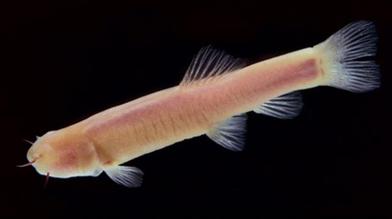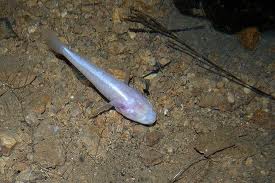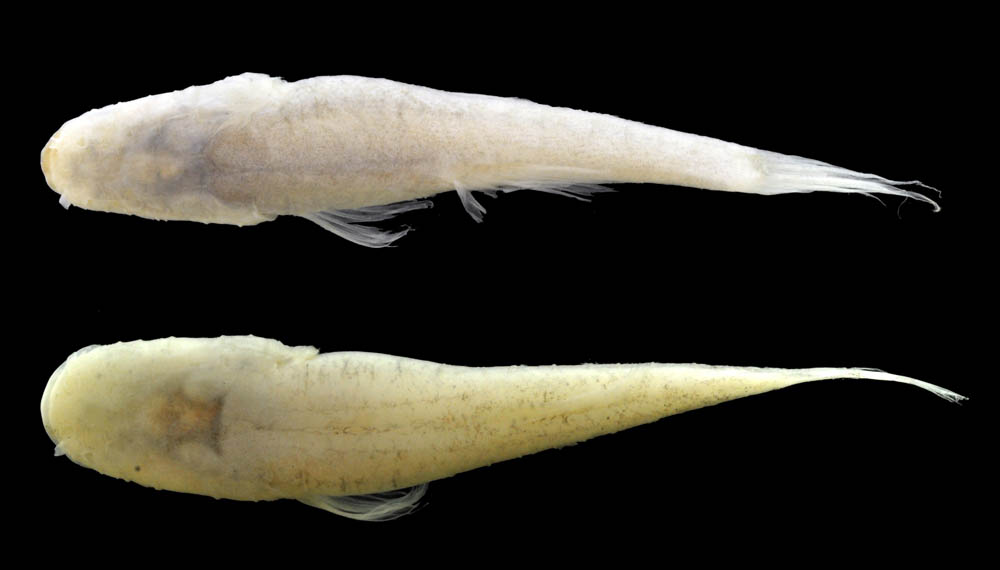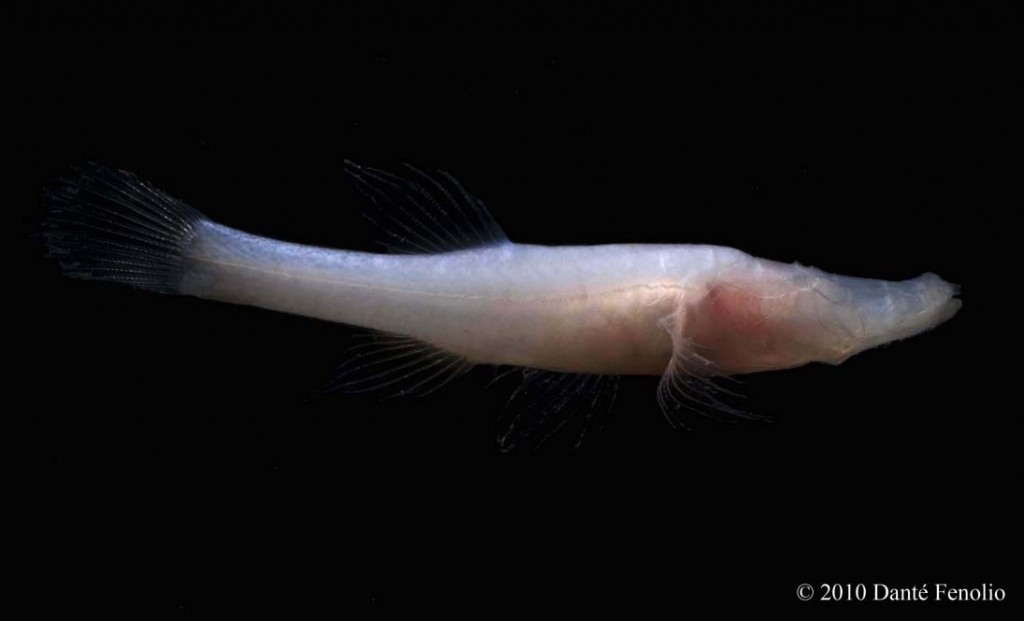
Speoplatyrhinus poulsoni
FAMILY
Amblyopsidae
TAXONOMY
Speoplatyrhinus poulsoni Cooper and Kuehne, 1974, Key Cave,
Alabama, United States.
OTHER COMMON NAMES
None known.
PHYSICAL CHARACTERISTICS
Grows to 2.83 in (7.2 cm). This species has an extremely elongated
and anteriorly depressed head that makes up one-third of
the standard length in adults. The snout is laterally compressed,
with a terminal mouth. The species is white in coloration
and lacks externally visible eyes as well as pelvic fins.
DISTRIBUTION
Its
DISTRIBUTION
is restricted to Key Cave, Lauderdale County,
on the north bank of the Tennessee River.
HABITAT
They are found mostly in still waters of cave systems.
BEHAVIOR
Nothing is known about this very rarely studied species.
FEEDING ECOLOGY AND DIET
They feed on copepods, isopods, amphipods, and other small
cavefish.
REPRODUCTIVE BIOLOGY
Little is known about the
REPRODUCTIVE BIOLOGY
of this species,
and what is known is not encouraging about its future potential
for survival. It appears that only a small percentage of females
reproduce, producing only a few eggs, and reproduction does
not take place every year.
CONSERVATION STATUS
Its total population size is estimated to be less than 100 individuals,
which would make it one of the most endangered fish
species in the world. It is classified as Critically Endangered by
the IUCN and Endangered by the U.S. Fish and Wildlife Service.
It is being threatened by groundwater pollution from
agricultural runoff.
SIGNIFICANCE TO HUMANS
Of particular scientific value as a cave species.
Photo Gallery of - Alabama cavefish





 Animalia Life
Animalia Life